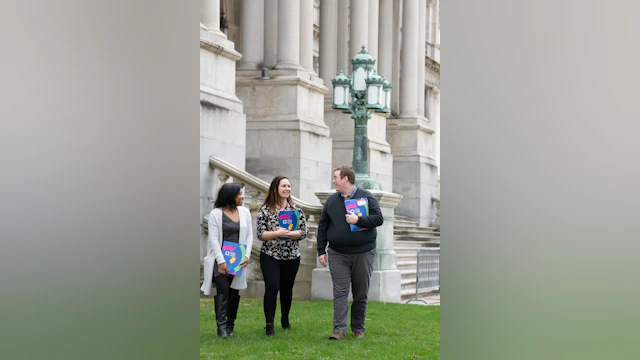Suicide Statistics
Learn the latest published statistics on suicide from the Centers for Disease Control and Prevention (CDC) Data & Statistics Fatal Injury Report for 2023, retrieved on April 1, 2025.
Access additional verified data from the CDC. Preliminary unverified quarterly mortality rates are also available but are not used for this page. Suicide rates listed are Age-Adjusted Rates. AFSP fact sheets are updated annually. We also list citation information for the information below as well as our fact sheets. All statistics presented on this page pertain to the United States. Click here to view global suicide statistics.
Suicide is the
11th
leading cause of death in the US
In 2023,
49,316
Americans died by suicide
In 2023, there were an estimated
1.5M
suicide attempts
Become an advocate to help prevent suicide
Learn moreBecome an advocateAdditional facts about suicide in the US
- The overall age-adjusted suicide rate in the United States remained nearly the same, at 14.21 per 100,000 in 2022 and 14.12 per 100,000 in 2023.
- In 2023, men died by suicide 3.8 times more than women.
- White males accounted for 68.13% of suicide deaths in 2023.
- In 2023, firearms accounted for 55.36% of all suicide deaths.
- 91% of adults surveyed in the U.S. think suicide can be prevented at least some of the time.
Suicide Rates in the United States
Make a selection below to see the data for your state. The national average is represented in gray. You can also download our Suicide Facts & Figures national fact sheet or view all state facts.
Showing state statistics for:
Suicide rates by age range
Suicide was the second leading cause of death among individuals between the ages of 10-34, and the fourth leading cause of death among individuals between the ages of 35 and 44.
In 2023, suicide rates were highest among adults aged 85 and older (22.66 per 100,000), followed by those aged 75 to 84 (19.44 per 100,000).
Compared to 2022, suicide rates in 2023 decreased among individuals aged 15-24 (0.66% decrease), 25-34 (2.5% decrease), 45-54 (1.8% decrease), and 65+ (6.8% decrease), while they slightly increased for those aged 35-44 (2.6% increase) and 55-64 (0.11% increase).
Suicide rates by race/ethnicity and sex
In 2023, among both males and females, Whites had the highest U.S. age-adjusted suicide rate (Male: 25.23 per 100,000; Female: 6.53 per 100,000). Suicide rates were much lower among Black or African Americans (Male: 14.59 per 100,000; Female: 3.44 per 100,000) and Asians (Male: 9.71 per 100,000; Female: 3.55 per 100,000).
Overall, the age-adjusted suicide rate for non-Hispanics was 24.66 per 100,000, compared to 13.26 per 100,000 for Hispanics.
Suicide methods
In 2023, firearms were the most common method of death by suicide, accounting for more than half of all suicide deaths (55.36%), followed by suffocation (including hanging) at 24.38% and poisoning (including drug overdose) at 9.45%.
Construction, Suicide Prevention, and Mental Health Support
Suicide attempts
When it comes to suicide and suicide attempts there are rate differences depending on demographic characteristics such as age, gender, ethnicity and race. Nonetheless, suicide occurs in all demographic groups.
In the U.S., no complete count of suicide attempt data is available. The CDC gathers data from hospitals on non-fatal injuries from self-harm as well as survey data.
In 2021, (the most recent year for which data are available), the rate of visits to the emergency departments for nonfatal self-harm injuries was approximately 148.2 per 100,000 people.
In 2023, National Survey of Drug Use and Health (NSDUH), an estimated 12.8 million adults age 18 or older reported having thoughts of suicide, and 1.5 million (0.6%) adults attempted suicide during the past year. Suicide attempts in the past year were highest among American Indian / Alaskan Native adults and adults who identify with two or more races (both 1.3%).
According to the most recent Youth Risk Behaviors Survey (2023), 9% of youth in grades 9-12 attempted suicide at least once in the past 12 months. Female students attempted suicide at a higher rate than male students (13% vs. 6%). Native Hawaiian or Pacific Islander students recorded the highest suicide attempt rate at 15%. Additionally, about 2% of high school students attempted suicide that resulted in an injury, poisoning, or overdose requiring treatment by a doctor or nurse in the past year.
Real stories of hope
Working Together to Prioritize Mental Health and Suicide Prevention in the New Year
By Corbin J. Standley, PhD, AFSP Senior Director of Impact Communication and Continuous Improvement
Supporting your Mental Health While Navigating Change
By Doreen Marshall, Ph.D., Former AFSP Vice President of Mission Engagement
Several clips of walkers at AFSP's Out of the Darkness Campus Walk events background video
Walk with us to prevent suicide

About AFSP
Learn about the American Foundation for Suicide Prevention, and our mission to save lives and bring hope to those affected by suicide.

Advocate for suicide prevention
Learn how American Foundation for Suicide Prevention Volunteer Advocates are helping our public policy office in Washington, D.C. to pass suicide prevention policies that will save lives.

Leadership, boards, committees and councils
The American Foundation for Suicide Prevention’s National Board, Councils and Committees are dedicated to the fight to stop suicide.